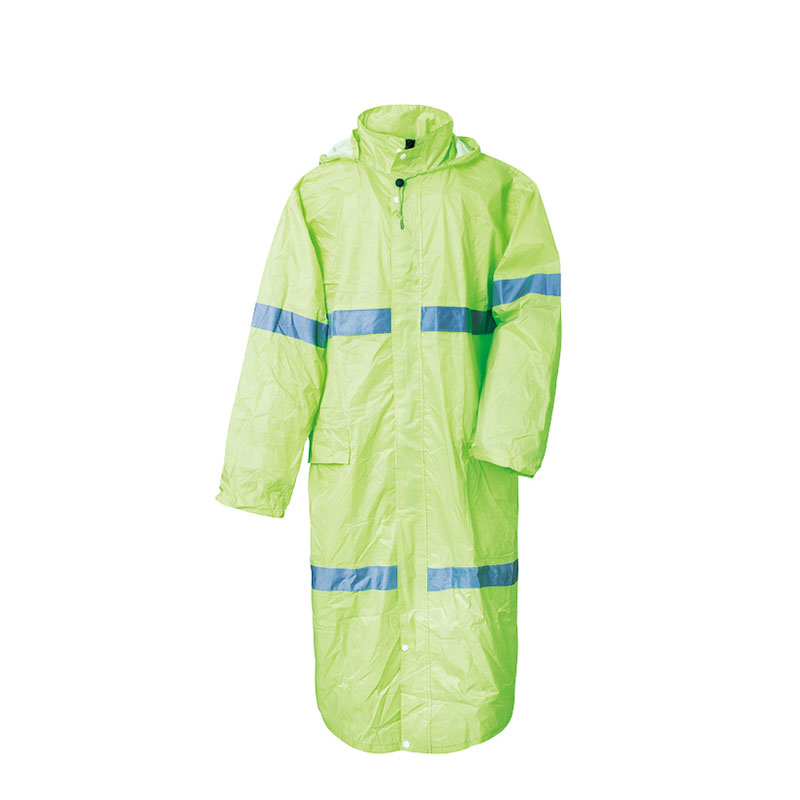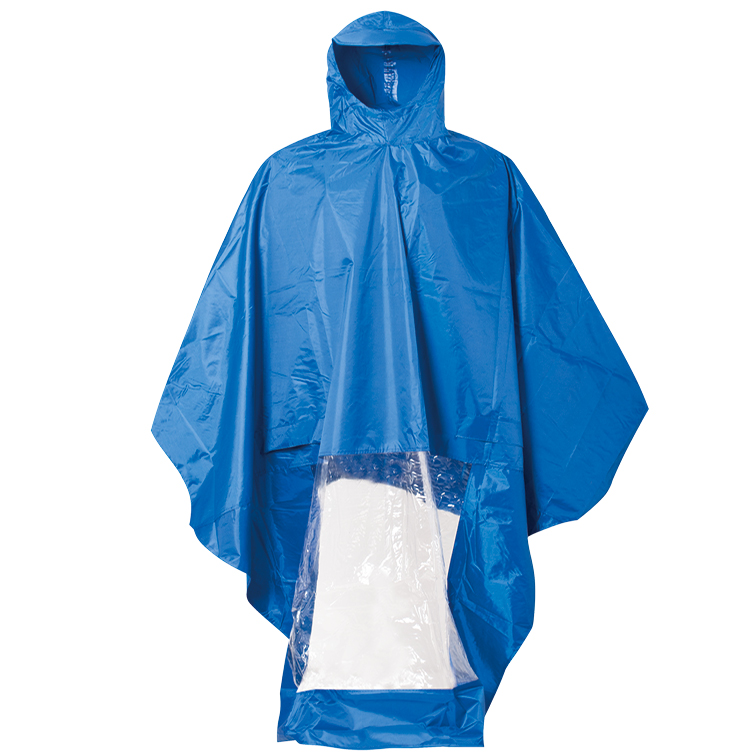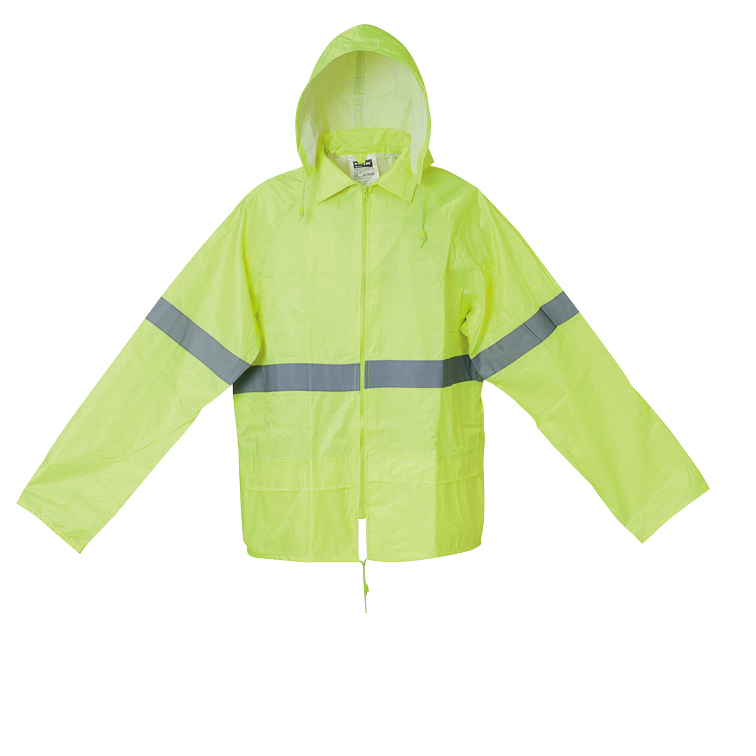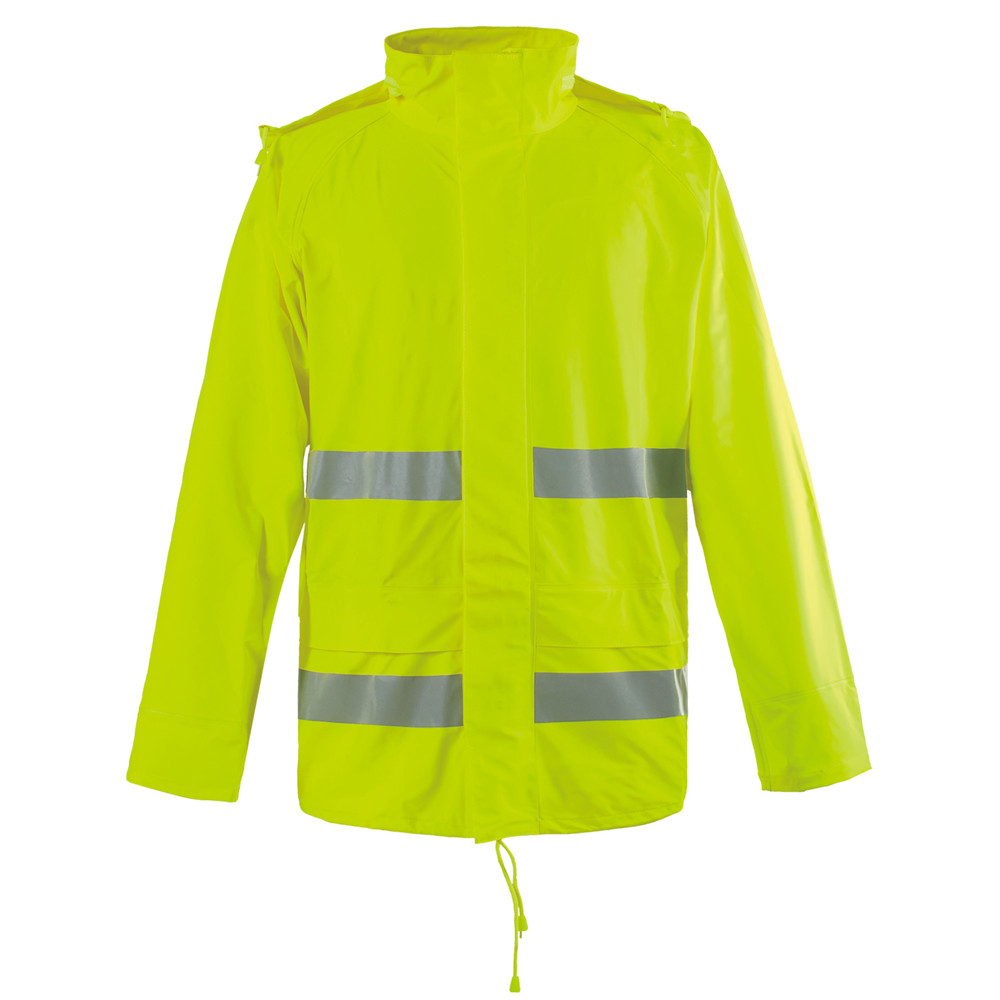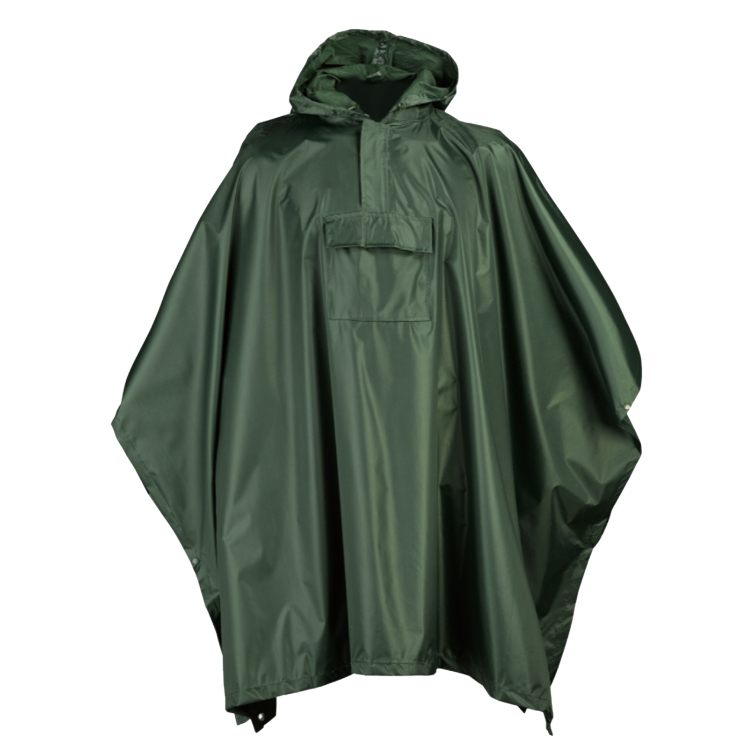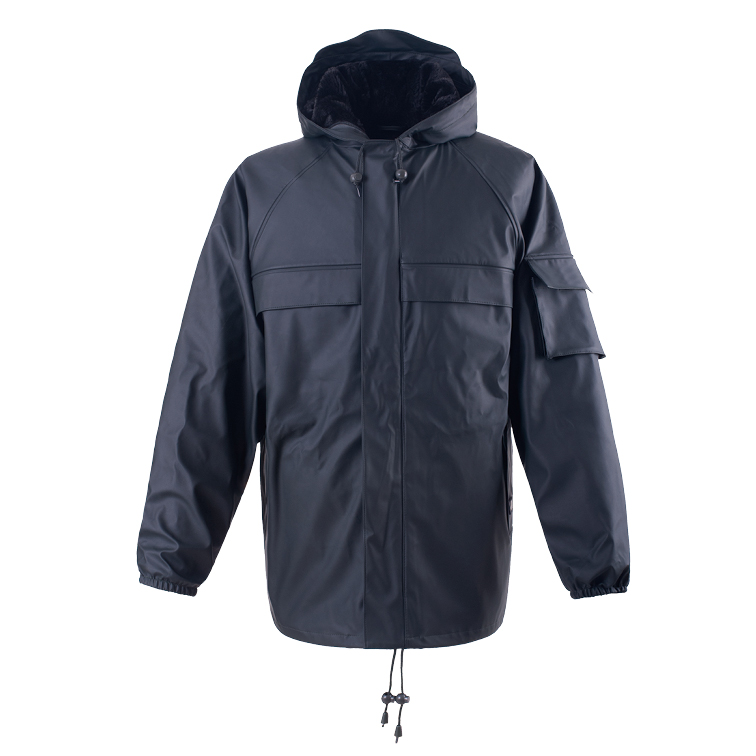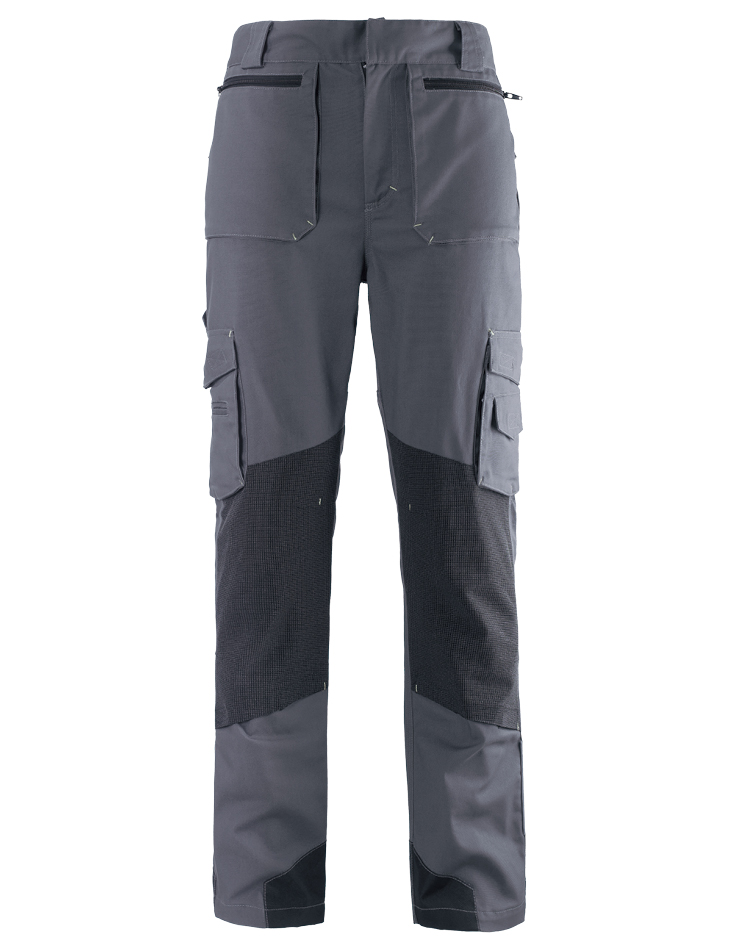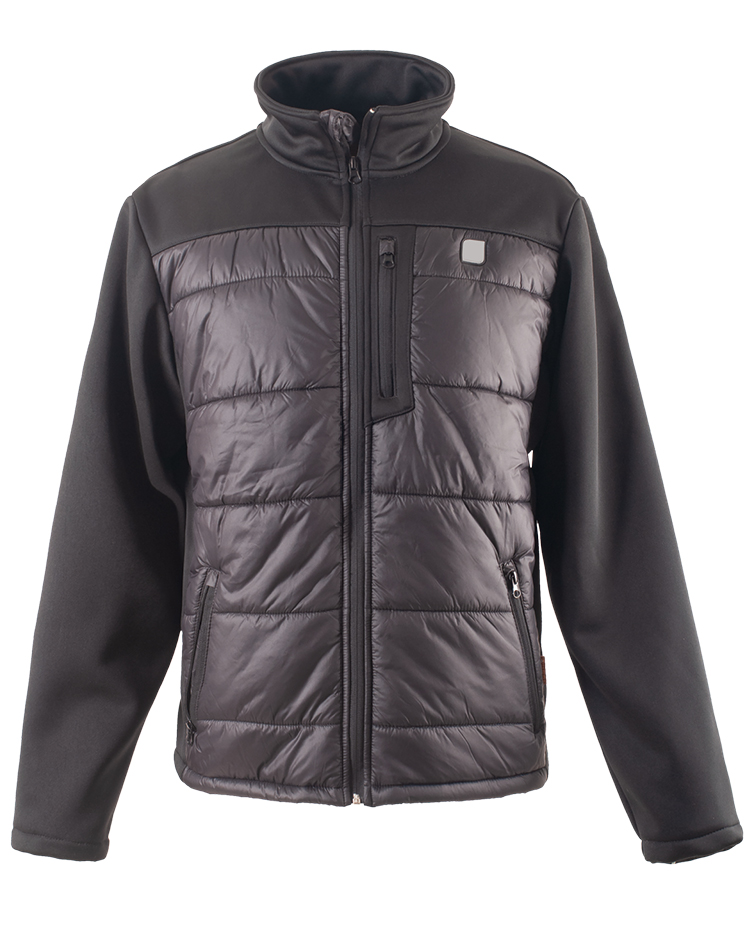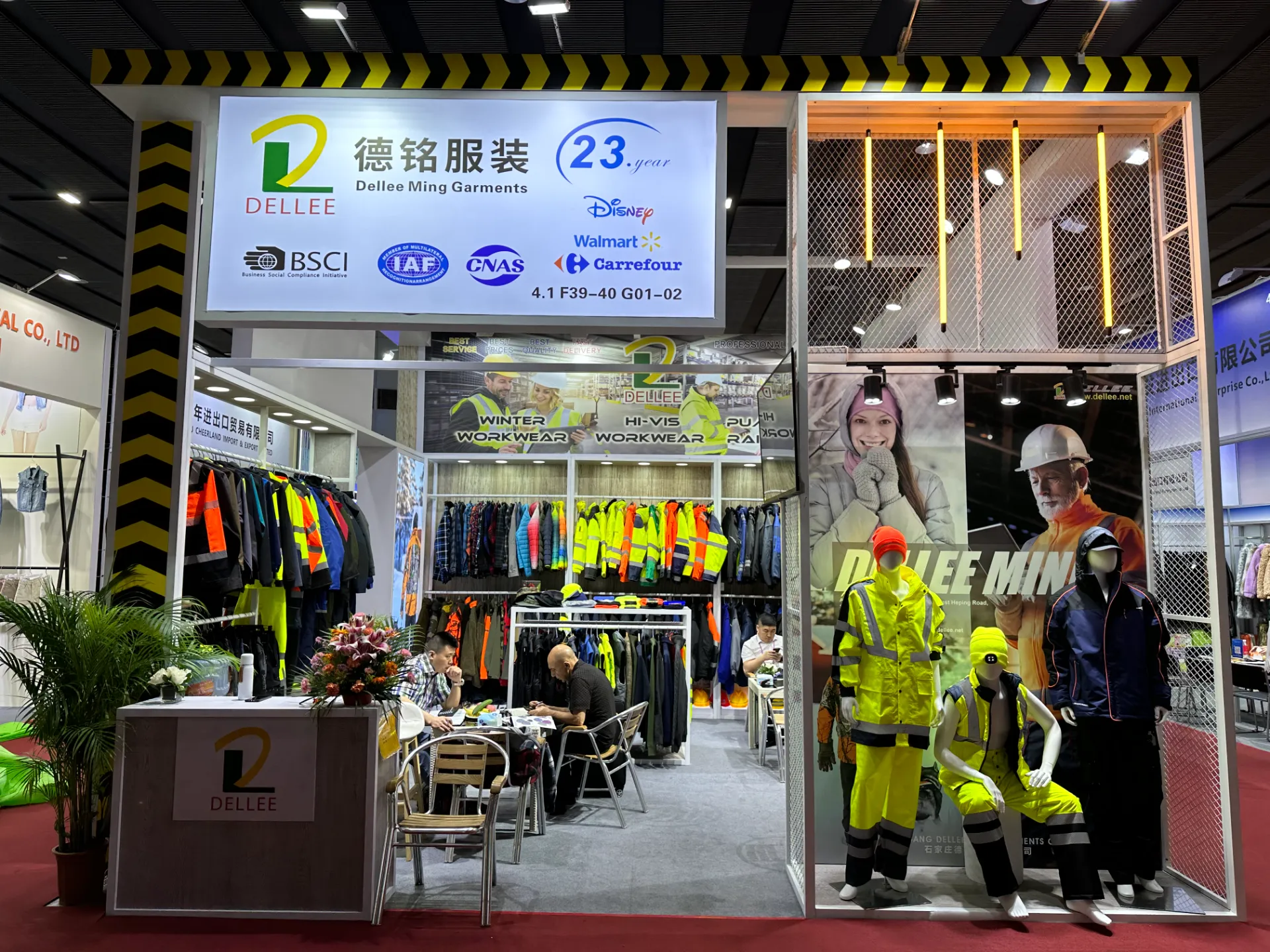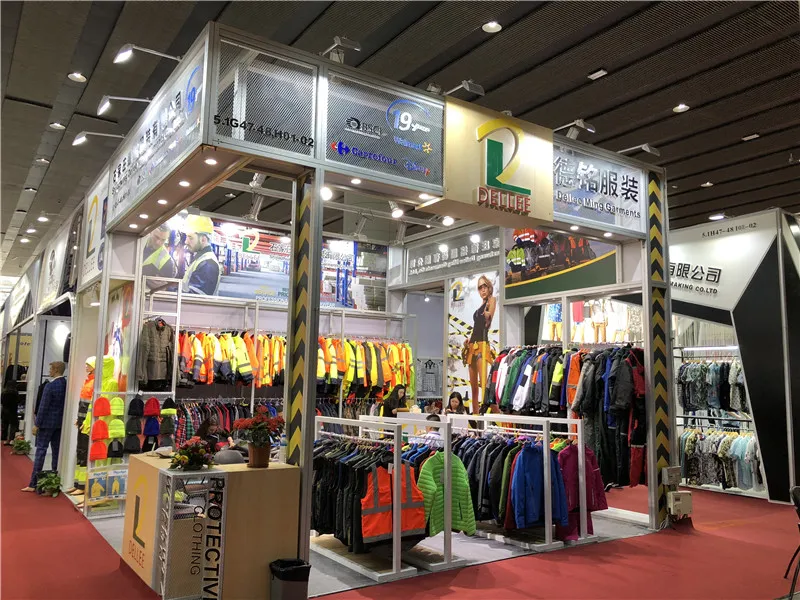Dear customers and friends:
The Ascendance of High-Visibility Workwear in Modern Industrial Safety
In an increasingly safety-conscious industrial landscape, the strategic deployment of high-visibility workwear has transcended mere compliance, evolving into a fundamental component of proactive risk management. Industries ranging from construction and logistics to utility maintenance and emergency services critically depend on ensuring their personnel are conspicuously visible, thereby mitigating the risk of accidents, especially in low-light conditions, inclement weather, or high-traffic environments. This imperative has driven significant innovation in textile technology and garment design, moving beyond rudimentary vests to sophisticated, ergonomically designed apparel that offers both safety and comfort. Among these advancements, the high visibility polo shirt stands out as a versatile and increasingly preferred choice for its blend of professional aesthetics, practical utility, and adherence to stringent safety standards. The global market for personal protective equipment (PPE) continues its robust expansion, propelled by escalating regulatory demands from bodies such as OSHA in the United States, EN standards in Europe (particularly EN ISO 20471), and analogous regional directives, alongside a heightened corporate awareness of employee well-being and productivity. This growth underscores a persistent trend towards specialized, multi-functional safety garments that integrate advanced material science with practical design, addressing the diverse and dynamic needs of the modern workforce. The evolution from basic high-visibility solutions to comprehensive, integrated apparel systems reflects a mature understanding that safety is not an add-on but an intrinsic part of operational excellence and corporate responsibility, demanding solutions that are both effective and adaptable to varied professional contexts.
The demand for sophisticated high-visibility garments is further amplified by demographic shifts in the workforce and the intensification of industrial activities in urban and complex environments. As construction sites become more congested and logistical networks expand, the potential for human-machine interaction escalates, making unimpeded visual detection paramount. Contemporary trends in high-visibility workwear emphasize not only compliance with minimum luminance and retroreflectivity requirements but also the integration of features that enhance wearer comfort and durability. This includes advancements in moisture-wicking fabrics that keep workers dry and comfortable in strenuous conditions, as well as highly durable materials that withstand the rigors of industrial environments and repeated laundering cycles without compromising their protective properties. The advent of segmented reflective materials has also improved garment flexibility and breathability, moving away from solid, less comfortable reflective strips. Furthermore, there's a growing emphasis on sustainable manufacturing practices and materials within the high-visibility sector, reflecting a broader industry shift towards environmental responsibility. For B2B decision-makers and technical personnel, understanding these underlying market dynamics and technological advancements is crucial for selecting PPE solutions that not only meet regulatory mandates but also contribute positively to workforce morale, operational efficiency, and long-term cost-effectiveness. The strategic investment in well-engineered high-visibility apparel like advanced high visibility polo shirts aligns directly with objectives of reducing workplace incidents and fostering a culture of safety.
Precision Engineering: The Manufacturing Process of High Visibility Polo Shirts
The production of a professional-grade high visibility polo shirt is a meticulous process demanding precision engineering and adherence to stringent quality control standards, far beyond the simplicity of standard garment manufacturing. It begins with the careful selection of specialized materials, primarily high-performance polyester fabrics designed for optimal breathability, moisture-wicking properties, and colorfastness. These fabrics are chosen not only for their inherent durability but also for their fluorescent properties, which ensure vibrant daytime visibility. Following material procurement, advanced CAD/CAM (Computer-Aided Design/Computer-Aided Manufacturing) systems are employed for precise pattern cutting, minimizing material waste and ensuring consistent sizing across large production batches. The cut fabric panels then move to the sewing lines, where skilled technicians utilize industrial-grade sewing machines to assemble the garment with reinforced seams, crucial for long-term durability in demanding work environments. A critical stage involves the application of retroreflective materials, typically heat-applied segmented reflective tape or high-quality sewn-on reflective bands. This application process must be precise, ensuring proper adhesion and orientation to meet specified retroreflectivity performance levels as dictated by international standards such as EN ISO 20471 and ANSI/ISEA 107. Each seam and reflective element undergoes rigorous in-process quality checks to prevent defects.
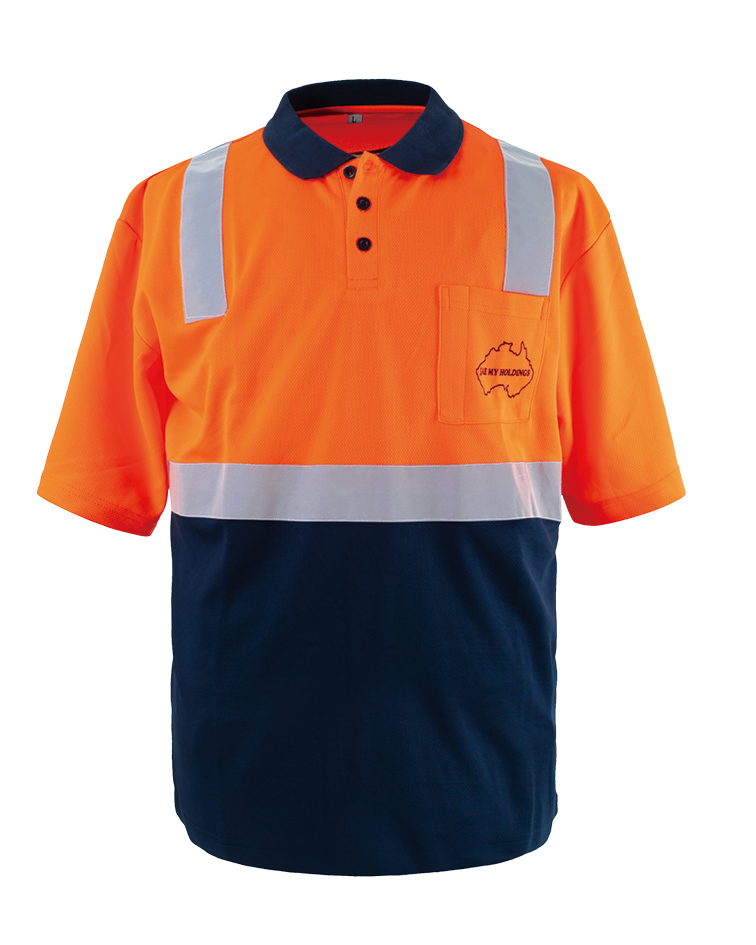
Post-assembly, each high visibility polo shirt undergoes a series of comprehensive quality assurance tests. These include visual inspections for defects, material composition verification, and, crucially, performance testing for photometric properties such as luminance and retroreflection. Manufacturers often utilize specialized equipment like spectrophotometers to verify the chromaticity of fluorescent materials and retroreflectometers to measure the reflective intensity of tapes, ensuring compliance with specified minimum performance criteria over multiple wash cycles. This rigorous testing ensures the garment retains its protective attributes throughout its projected lifespan, typically validated for a certain number of industrial washes. The expected service life of a high-visibility polo shirt can vary based on the intensity of use and washing practices, but quality products are designed to withstand at least 25-50 industrial laundering cycles while maintaining compliance. Applicable industries for these technologically advanced garments are broad and include, but are not limited to, construction workers, road maintenance crews, railway personnel, airport ground staff, utility service technicians, event management staff, and logistics operatives. In these diverse settings, the advantages of a well-crafted high-visibility polo shirt are manifold: enhanced worker safety through superior visibility in various lighting conditions, improved comfort due to breathable and moisture-wicking fabrics, significant durability against wear and tear, and a professional appearance that projects competence and adherence to safety protocols. This commitment to detailed craftsmanship and rigorous testing ensures that the final product not only meets but often exceeds the demanding safety and performance expectations of B2B clients globally.
Technical Specifications and Performance Metrics: A Data-Driven Insight
Understanding the technical specifications of a high visibility polo shirt is paramount for B2B procurement specialists and safety managers, ensuring optimal product selection aligns with specific operational requirements and regulatory mandates. The core of a high-visibility garment's effectiveness lies in its material composition and the meticulous engineering of its reflective components. Typical fabrics used are 100% polyester, often with specialized weaves to enhance breathability and moisture-wicking capabilities, crucial for worker comfort in warm or physically demanding environments. Fabric weight, measured in Grams per Square Meter (GSM), commonly ranges from 150 GSM to 180 GSM, balancing durability with comfort. The fluorescent background material must meet specific chromaticity and luminance factors to ensure daytime visibility, as defined by standards like EN ISO 20471 and ANSI/ISEA 107. For instance, EN ISO 20471 Class 2 requires a minimum background material area of 0.50 m² and retroreflective material of 0.13 m². Retroreflective performance, critical for nighttime visibility, is measured in candelas per lux per square meter (cd/lux·m²), with quality reflective tapes (e.g., 3M Scotchlite or equivalent) providing high initial values and excellent durability over many wash cycles. The width of reflective tape typically ranges from 50mm (2 inches) to 75mm (3 inches), strategically placed on the torso and sleeves to maximize 360-degree visibility.
Beyond visibility, other critical parameters include UV Protection Factor (UPF), which is increasingly important for outdoor workers, with many high-visibility fabrics offering UPF 30+ or 50+. Colorfastness to washing and light, tear strength, and tensile strength are also regularly tested to ensure garment longevity and performance under strenuous conditions. The table below provides a typical comparison of key parameters for standard high visibility polo shirts aligned with international safety standards, offering a clear technical baseline for informed decision-making. These specifications are not merely numbers; they represent the engineering integrity and performance capabilities that translate directly into enhanced worker safety, comfort, and compliance. For instance, the choice between different classes (e.g., ANSI Class 2 vs. Class 3) hinges on the specific risk assessment of the work environment, dictating the required amount of fluorescent and reflective material. A higher class indicates greater visibility, suitable for higher traffic speeds or more complex work zones. Therefore, a comprehensive understanding of these technical parameters empowers organizations to make data-driven decisions that optimize safety investments and mitigate workplace hazards effectively, ensuring the chosen high-visibility apparel provides robust, reliable protection for their workforce.
| Parameter | Description | Typical Specification (ANSI Class 2 / EN ISO 20471 Class 2) | Measurement Unit / Standard |
|---|---|---|---|
| Fabric Composition | Primary material for the garment body. | 100% Polyester (Moisture-wicking, Birdseye Mesh or Pique Knit) | Material Type |
| Fabric Weight | Density of the fabric, influencing durability and comfort. | 150 GSM - 180 GSM | Grams per Square Meter (GSM) |
| Fluorescent Background Area | Minimum area of fluorescent material required for daytime visibility. | Min. 0.50 m² (EN ISO 20471 Class 2) / Min. 0.74 m² (ANSI/ISEA 107 Type R Class 2) | Square Meters (m²) |
| Retroreflective Material Area | Minimum area of reflective material for nighttime visibility. | Min. 0.13 m² (EN ISO 20471 Class 2) / Min. 0.50 m² (ANSI/ISEA 107 Type R Class 2) | Square Meters (m²) |
| Reflective Tape Width | Standard width of applied reflective tape. | 50mm (2 inches) to 75mm (3 inches) | Millimeters (mm) / Inches |
| Retroreflective Performance | Measure of light reflected back to the source. | Initial: >330 cd/lux·m²; After 25 washes: >100 cd/lux·m² | Candelas per lux per square meter (cd/lux·m²) |
| UV Protection Factor (UPF) | Measures effectiveness of fabric in blocking UV radiation. | UPF 30+ to UPF 50+ | UPF Rating |
| Wash Cycles Endurance | Guaranteed number of washes before performance degradation. | Min. 25-50 industrial washes (e.g., ISO 6330, Method 6A) | Number of Cycles |
Optimizing Safety: Application Scenarios and Distinct Technical Advantages
The versatility of the high visibility polo shirt makes it an indispensable asset across a diverse array of industrial and commercial settings, offering distinct advantages over other types of high-visibility garments, particularly in specific operational contexts. For instance, in construction environments where workers are exposed to both vehicular traffic and heavy machinery, a highly visible garment significantly reduces the risk of collisions. In logistics and warehousing, where forklifts and other moving equipment are prevalent, these shirts ensure personnel are readily identifiable, especially during busy loading and unloading operations or in dimly lit areas. Utility workers, frequently operating near active roadways or in areas with fluctuating light conditions, benefit immensely from the consistent visibility provided by these polos. Their lightweight and breathable nature makes them ideal for warmer climates or during summer months where a heavier garment like a high visibility coat would cause heat stress, thus improving worker comfort and reducing the risk of heat-related illnesses. The inherent moisture-wicking properties of the fabric are crucial in sustaining worker comfort during physically demanding tasks, effectively drawing sweat away from the body and promoting rapid evaporation.
Technically, the advantages extend beyond mere comfort. The integrated design of a polo shirt, compared to a vest worn over regular clothing, provides more consistent and reliable coverage of fluorescent and retroreflective materials, ensuring compliance and superior visibility even when performing various movements. Features such as integrated chest pockets, often seen in a high visibility polo shirts with pockets variant, add practical utility, allowing workers to carry essential small tools, pens, or communication devices securely, thereby enhancing productivity without compromising safety. Many modern high-visibility polo shirts also incorporate anti-microbial treatments to reduce odor and extend wear time between washes, further contributing to hygiene and long-term cost savings. The professional collar and button placket design also contribute to a more corporate appearance, making these shirts suitable for supervisory roles, site visitors, or client-facing positions where both safety and professional image are paramount. Unlike a bulkier high visibility coat, which is designed for cold weather or extreme conditions, the polo shirt offers a lighter, more agile solution for environments requiring continuous visibility without the need for thermal insulation. This targeted design consideration allows organizations to equip their workforce with apparel that is perfectly suited to the specific demands of their job roles and environmental conditions, leading to enhanced compliance, superior worker satisfaction, and ultimately, a more secure and efficient operational workflow.
Tailored Safety: Customization Solutions and Client-Centric Approaches
Recognizing that no two businesses are identical, leading manufacturers of high visibility polo shirts offer extensive customization solutions designed to meet the precise and often unique requirements of B2B clients. This goes beyond mere sizing and color variations; it encompasses brand integration, specialized feature additions, and bespoke design adjustments that align with corporate identity and specific operational needs. Customization typically begins with comprehensive consultation, where experienced design teams work directly with clients to understand their aesthetic preferences, functional requirements, and adherence to specific industry regulations or corporate safety standards. Options commonly include the application of corporate logos and branding through high-quality embroidery or heat-transfer printing, ensuring brand consistency across the workforce while maintaining the garment's integrity and safety compliance. Clients can specify exact color shades (within standard fluorescent color guidelines), incorporate specific pocket configurations – like the popular high visibility polo shirts with pockets for added utility – or even request unique reflective tape patterns, provided they meet minimum area and retroreflectivity requirements.
The customization process is highly iterative, often involving initial design mock-ups, material sampling, and even prototype production to allow clients to review and approve the final product before full-scale manufacturing commences. This meticulous approach ensures that the customized high visibility polo shirt not only meets all safety criteria but also perfectly aligns with the client's corporate image and functional demands. For example, a client in the mining industry might require additional reinforced stitching or specialized fabric treatments for enhanced abrasion resistance, whereas a client in event management might prioritize lightweight material and multiple quick-access pockets. Manufacturers also offer flexibility in order volumes, accommodating both smaller, specialized batches and large-scale bulk orders for extensive workforces. This commitment to tailor-made solutions extends to detailed discussions about lead times, delivery schedules, and after-sales support, guaranteeing a seamless and efficient procurement experience. By offering such comprehensive customization capabilities, manufacturers empower businesses to invest in high-visibility apparel that is not just compliant but also a strategic asset, reinforcing brand identity, enhancing worker morale through comfort and functionality, and ultimately contributing to a safer, more efficient operational environment. This client-centric model underscores a partnership approach, where the supplier acts as an extension of the client's safety and branding departments.
Ensuring Excellence: Quality Assurance, Certifications, and Customer Support
The credibility and efficacy of any high visibility polo shirt hinge significantly on the rigorous quality assurance protocols and internationally recognized certifications maintained by its manufacturer. A reputable manufacturer adheres to a comprehensive quality management system, typically certified under ISO 9001, which governs every stage from raw material procurement to final product dispatch. This commitment to quality is not merely procedural but forms the bedrock of trust between the supplier and B2B client. Key certifications, such as EN ISO 20471 (for European markets) and ANSI/ISEA 107 (for North American markets), are non-negotiable and attest to the garment's compliance with stringent requirements for background material chromaticity, luminance, and retroreflective performance. Achieving these certifications involves extensive third-party testing by accredited laboratories, evaluating factors such as colorfastness, dimensional stability after washing, tear and tensile strength, and critically, the retroreflectivity of reflective materials after multiple laundering cycles. For instance, a quality high visibility polo shirt designed for industrial use will specify its performance after 25 or even 50 washes, ensuring sustained protection over its service life.
Beyond initial certifications, ongoing quality control involves batch testing, material inspections upon receipt, and in-line process checks during manufacturing. This continuous oversight minimizes defects and ensures consistent product quality across large volumes. A robust customer support framework is equally vital, encompassing clear communication regarding delivery cycles, which are often critical for project timelines, and transparent warranty commitments that instill confidence in product longevity and performance. Comprehensive after-sales support includes accessible channels for inquiries, technical assistance, and efficient handling of any potential issues, reinforcing the manufacturer's dedication to client satisfaction. Reputable suppliers often provide detailed product datasheets, compliance certificates, and care instructions to maximize garment lifespan and performance. The commitment to these aspects of quality assurance, authoritative certifications, and responsive customer service transforms a product from a simple commodity into a reliable safety solution, allowing B2B decision-makers to make procurement choices with complete assurance in the product's quality, compliance, and long-term value. This holistic approach ensures that every high visibility polo shirt delivered represents not just a garment, but a promise of safety, durability, and unwavering support.
Frequently Asked Questions (FAQ)
- What standards do your high visibility polo shirts comply with?
Our high visibility polo shirts are designed and manufactured to comply with leading international safety standards, including EN ISO 20471 (European Standard for High-Visibility Clothing) and ANSI/ISEA 107 (American National Standard for High-Visibility Safety Apparel). Specific class ratings (e.g., Class 2 or Class 3) depend on the garment's design and material coverage, tailored to client needs. - How should I care for my high visibility polo shirt to maximize its lifespan?
To maintain the integrity and performance of your high visibility polo shirt, it's crucial to follow the care instructions on the garment label. Generally, this involves machine washing in cold water with similar colors, avoiding bleach, and tumble drying on low heat or line drying. Proper care helps preserve the fluorescent color and retroreflective properties over time. - Can I get custom branding or logos on the high visibility polo shirts?
Absolutely. We offer comprehensive customization services, including high-quality embroidery and heat-transfer printing for corporate logos, company names, and specific branding requirements. Our design team will work with you to ensure your branding is integrated effectively while maintaining the garment's compliance and safety features. - What is the typical lead time for bulk orders of high visibility polo shirts?
Lead times vary depending on order volume, customization complexity, and current production schedules. We strive for efficient delivery and will provide a detailed timeline during the quotation process. For standard orders, typical lead times range from 4-6 weeks after design approval, with expedited options available for urgent requirements. - Do you offer samples for evaluation before a large order?
Yes, we understand the importance of evaluating product quality and fit before committing to a large order. We can provide samples of our high visibility polo shirts for your assessment. Please contact our sales team to discuss your specific sample requirements.
Application Successes and Industry Impact
The tangible benefits of deploying high-quality high visibility polo shirts are best illustrated through real-world application successes across various demanding industries. For example, a large national construction firm operating multiple active sites standardized their workforce apparel with custom-branded, ANSI Class 2 high-visibility polo shirts. This initiative not only significantly enhanced worker visibility during both daytime and twilight operations but also fostered a stronger sense of team identity and professionalism across geographically dispersed projects. Post-implementation data showed a noticeable reduction in near-miss incidents related to worker visibility, validating the investment in superior PPE. The moisture-wicking properties of the fabric were particularly praised by workers in warmer climates, contributing to higher comfort levels and sustained productivity throughout long shifts. The ease of care and durability of the garments also led to reduced replacement costs for the firm over a two-year period, demonstrating a positive return on investment beyond just safety compliance.
Another notable success story comes from a major logistics and warehousing company that equipped their entire floor staff and delivery personnel with high visibility polo shirts with pockets. In a bustling environment characterized by constant movement of forklifts, automated guided vehicles (AGVs), and heavy goods, clear human visibility is paramount. The integrated pockets proved invaluable for carrying handheld scanners, mobile devices, and manifests, improving operational efficiency by keeping essential tools readily accessible. The professional appearance of the polo shirts also elevated the company's image during client interactions and external deliveries. For a municipal utility department, switching from basic safety vests to durable, EN ISO 20471 Class 3 compliant high visibility polo shirts for their outdoor service crews working near active traffic lanes transformed their safety posture. The superior 360-degree visibility, especially during inclement weather conditions, significantly enhanced the safety of field technicians and reduced the exposure risk from passing vehicles. These case examples collectively underscore how a strategic investment in well-engineered high-visibility apparel translates directly into demonstrable improvements in safety performance, operational efficiency, and overall corporate image, proving the value of quality and intelligent design in protective workwear.
Conclusion and Future Outlook in High-Visibility Workwear
The evolution of high-visibility workwear, epitomized by the advanced high visibility polo shirt, reflects a profound shift in industrial safety paradigms. No longer viewed as merely a regulatory burden, high-visibility apparel is now recognized as a critical protective asset that integrates cutting-edge material science, ergonomic design, and robust manufacturing processes. For B2B decision-makers, understanding the nuanced technical specifications, customization opportunities, and the comprehensive quality assurance frameworks that underpin these garments is essential for making informed procurement choices. Investing in superior high-visibility solutions not only ensures compliance with stringent international safety standards such as EN ISO 20471 and ANSI/ISEA 107 but also significantly contributes to enhancing worker safety, comfort, and overall productivity. The versatility of the high-visibility polo shirt, offering breathability for comfort in diverse climates and a professional aesthetic suitable for a broad range of roles, makes it a cornerstone of modern industrial safety wardrobes. Its ability to provide consistent visibility, coupled with features like moisture-wicking fabrics and integrated pockets, represents a strategic investment in human capital and operational resilience.
Looking ahead, the landscape of high-visibility workwear is poised for continued innovation, driven by advancements in smart textile technology, sustainable manufacturing practices, and increasingly granular data analytics for risk assessment. Future iterations may integrate bio-monitoring capabilities, enhanced thermal regulation, or even self-cleaning properties, further elevating the protective and functional aspects of garments. The industry is also moving towards greater sustainability, with an emphasis on recycled materials and eco-friendly dyeing processes, reducing the environmental footprint of production. For businesses, staying abreast of these emerging trends and partnering with manufacturers committed to continuous improvement and rigorous quality control will be paramount in maintaining a leading edge in workplace safety. The strategic selection of high-visibility apparel, particularly robust and adaptable solutions like the high visibility polo shirt, is a testament to a company’s commitment to employee well-being and operational excellence, directly contributing to a safer, more efficient, and more responsible industrial future.
References
- European Committee for Standardization. (2013). EN ISO 20471:2013 - High-visibility clothing - Test methods and requirements.
- International Safety Equipment Association. (2015). ANSI/ISEA 107-2015 - American National Standard for High-Visibility Safety Apparel and Accessories.
- International Organization for Standardization. (2015). ISO 9001:2015 - Quality management systems - Requirements.
- U.S. Department of Labor, Occupational Safety and Health Administration (OSHA). (2020). OSHA 29 CFR 1926.32(d) - Standard Interpretations.
- European Agency for Safety and Health at Work (EU-OSHA). (2019). Personal Protective Equipment (PPE) in the context of COVID-19.
Post time: Aug . 17, 2025 07:00

